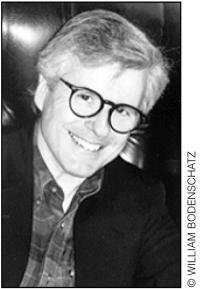When she set out to write a book about Americans' long-standing interest in self-improvement, writer Jessica Lamb-Shapiro was forced to confront a painful event in her own family history. The resulting journey forms the heart of her insightful and often funny new book, Promise Land.
Truth be told, a book about self-help was the last thing I wanted to write. My father, a child psychologist, had been writing self-help books since I was a child, and subjecting me to self-help culture for just as long. Self-help was about as interesting to me as the homemade cooperative board games my father and I used to play (no one wins). But when my father signed up for a weekend workshop with one of the Chicken Soup for the Soul authors, I was intrigued. It seemed odd to me that someone with so much experience writing self-help, who was smart and thoughtful and by normal standards successful, could still be seduced by the promise of improvement.
"Thinking about my mother’s suicide while writing a book about self-help suddenly seemed not just ironic but incredibly, regrettably, relevant."
Going to that conference with my dad reminded me how funny and absurd self-help could be, and at the same time how meaningful or tragic. It reminded me that self-help is not about Tony Robbins or Eckhart Tolle, but about the countless individuals whose irrepressible, unrelenting desire to improve sustains them. I’ve always been fascinated with the never-ending aspect of the American Dream. I also wanted to explore the idea that people who didn’t read self-help books were still affected by self-help culture, how it’s part of the story we tell ourselves about ourselves. Once I looked into the history of self-help and found out Victorians loved it, I was sold on the topic.
For a few years I struggled with the structure of the book. I had the idea that I could look at different genres of self-help—books on parenting or grieving or dating—but it ended up feeling flat and repetitive.
When I started looking at books on grieving, I couldn’t help but think about my mother’s suicide when I was a young child. My father and I had barely talked about her death, and reading those books gave me a sense of community and continuity and made me feel like less of a motherless weirdo. Thinking about my mother’s suicide while writing a book about self-help suddenly seemed not just ironic but incredibly, regrettably, relevant.
Not only had I started a book about self-help, which I hadn’t really set out to write, I was now writing a book about a taboo subject in my family, which no one wanted to talk about. On top of that, I had a real aversion to “memoir,” and it seemed especially ridiculous for someone in their 30s to write anything resembling one. Worse, I had been writing a book that was supposed to be funny. You know what’s not funny? Mother suicide. I felt like I had been batting a piñata, but instead of candy and toys severed human limbs fell out. Children screamed, and everyone left the party.
On the plus side, adding a memoir element solved my structure problem. A pyrrhic victory.
I’ve always liked that about writing, the way it can blindside you. The way you can blindside yourself. This is why I titled my prologue “On Missing The Obvious.” Writing the book forced me to talk to my father about my mother. Over the years I spent writing Promise Land: My Journey Through America's Self-Help Culture, we visited her grave for the first time, and my dad started talking to me about her life, and what her death was like for him. It was difficult for me to bring up something that I knew was so painful for him, but talking about it together seemed to help. Which isn’t to say that some days didn’t end in tears and hours of watching of puppy videos on the Internet for emotional triage. But ultimately, my book about self-help ended up being a kind of self-help exercise for me, and maybe even for my dad—which, if you think about it, is kind of funny.
Promise Land is the first book by Jessica Lamb-Shapiro, who has published fiction and nonfiction in The Believer, McSweeney's, Open City and Index magazine, among other publications. She has been a fellow at the MacDowell Colony and the New York Foundation for the Arts, and lives in New York City and Columbia County, New York.






















